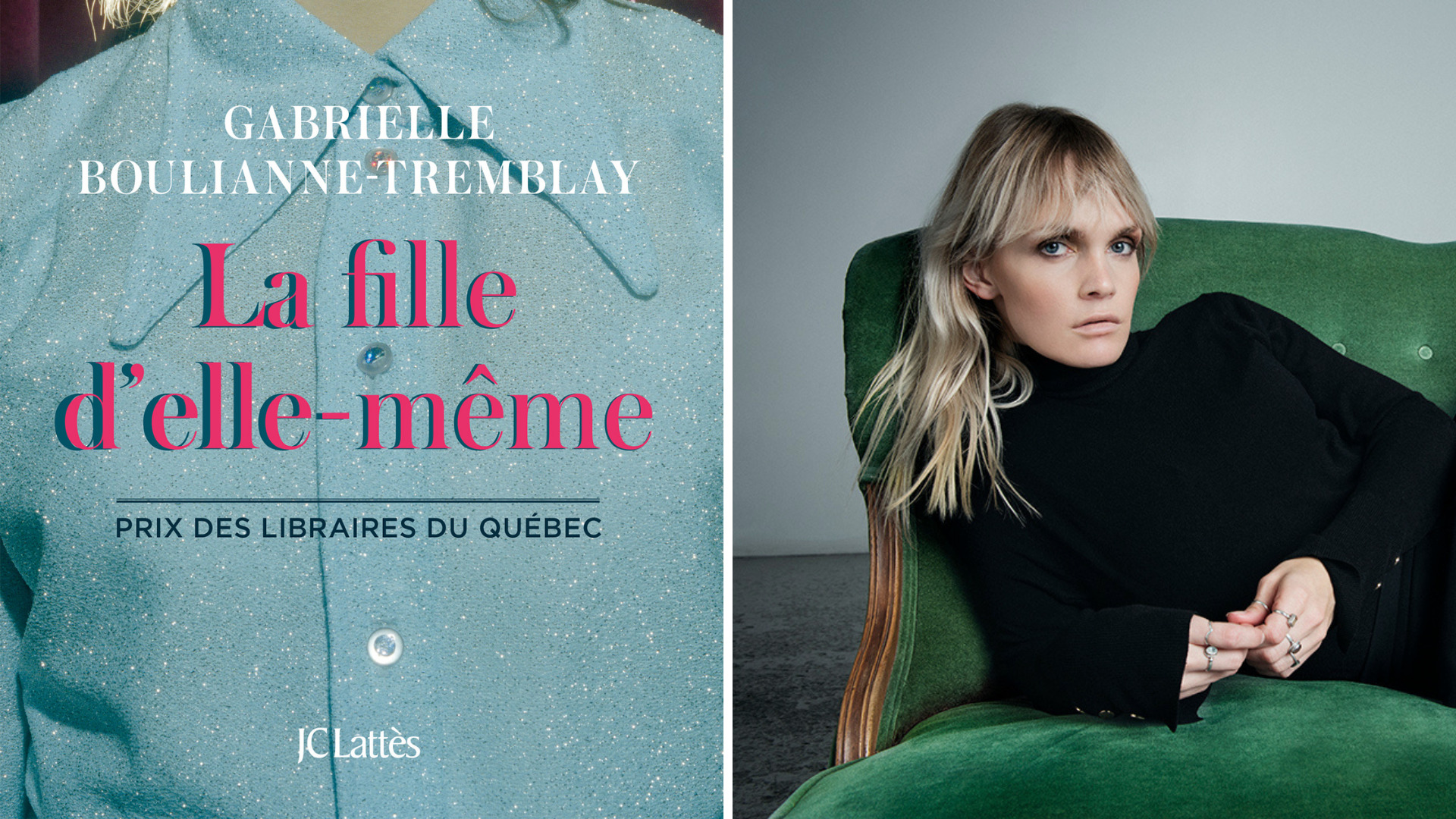The Quebec actress and comedian, Gabrielle Boulianne-Tremblay, reveals in this first autofiction story her journey into transience, but not only. Published in 2021 in Quebec, it was released in France in October by JC Lattès.
Recipient of the Quebec Booksellers’ Prize last year, this important and necessary book bears witness to a literature that finally leaves space for trans people to tell their stories about themselves. Encounter.
Interview with Gabrielle Boulianne-Tremblay, author of “The Daughter of Herself” (JC Lattès)

To miss. Why did you write this book?
Gabrielle Boulianne-Tremblay. I started writing it when I was fifteen and it took me another fifteen years to write it. It was basically a work of fiction, which turned into auto-fiction, after reading Nelly Arcan’s books, which moved me. I didn’t know this literary genre, it was a revelation. I realized that fiction was a way to erase myself, and having spent my life as a trans woman being a ghost, autofiction restored an opacity to me as a human being.
I wanted to talk about transience, but also address issues relating to family dynamics, injustices, friendships.
I come from a rural background, I grew up in the 90s, I didn’t have any representation. I wanted to write for that too.
The part concerning childhood occupies a good half of the story, why was it important to transcribe this period of your life?
For me it is very important to know where we come from to get to where we are going. Retrascribing this period through the eyes of a child, but with an adult voice, was the opportunity to take revenge for the past, for events that did not unfold as I would have liked. It’s a love-filled part of the child I was.
There are also very beautiful passages on the queer world and the drag world, how did you want to transcribe these spaces?
Having been part of this scene in my twenties, I wanted to pay homage to it streets of Night which is very bright. There I met a chosen family, a queer family that celebrated the woman I am, that made me understand that it was okay to live the life I live. I wanted to have an anthropological look at the creation of self-confidence that arises during these evenings.
Like a water lily growing in stagnant water, the character goes through difficult times, but flourishes in the open.
There is an important issue from a literary point of view that runs through your work, and that is the use of pronouns. The character is perceived as a boy, but always has a female gender. How did you work on your text in relation to this topic?
For as long as I can remember, I have always defined myself as feminine. I wanted it to be an engaging novel, with an unnamed protagonist. It was important for me to see the violence that misgendering causes internally, even if the child character doesn’t know she’s a woman yet, it’s such a powerful feeling. I wanted to raise awareness about using the correct pronouns for trans people.
The question of love is also fundamental in your book, why?
I found it interesting to depict a romantic relationship that begins between two people who are originally homosexual, but one of whom is a trans woman who has not yet come out. Her lover, who is basically a benevolent person, turns into an antagonist, and wants to suffocate her under a glass bell, to quote Sylvia Plath. It was important to describe this, because these are ubiquitous dynamics for many trans people.
All trans people should be rewarded for surviving such violence, for their resilience, we are very brave people. This novel shows some of that courage, being a trans woman every day.
Can you tell us about the success your novel had in Quebec when it came out in 2021?
I received an enthusiastic welcome! It was the first work of francophone autofiction written by a trans woman in Quebec. There is nothing better than the work of an interested person to open consciences. I noticed this enthusiasm and I think that ten years ago this book would not have seen the light of day.
The books are for me lighthouses in the night, talismans of hope, they arrived at the right time for many people who were wondering about trans identities.
This is not a manual, there are many ways to be trans. It gave a good overview without falling into teaching. The fathers wrote to me to tell me “thank you, thanks to your book I understand my daughter better.” Priceless!
Finally, what feedback have you received in France about your book?
It’s a great welcome! I’m starting over, because in France people don’t know me at all. It’s extremely inspiring to meet a new audience, a new audience. It’s interesting to see what we remember about a novel from one people to another. I feel that the book resonates with its audience and I am very happy that the French have a place for this book in their hearts.
His daughter, Gabrielle Boulianne-Tremblay, JC Lattès editions.
Add Madmoizelle to your favorites on Google News so you don’t miss any of our articles!
Source: Madmoizelle
Mary Crossley is an author at “The Fashion Vibes”. She is a seasoned journalist who is dedicated to delivering the latest news to her readers. With a keen sense of what’s important, Mary covers a wide range of topics, from politics to lifestyle and everything in between.




